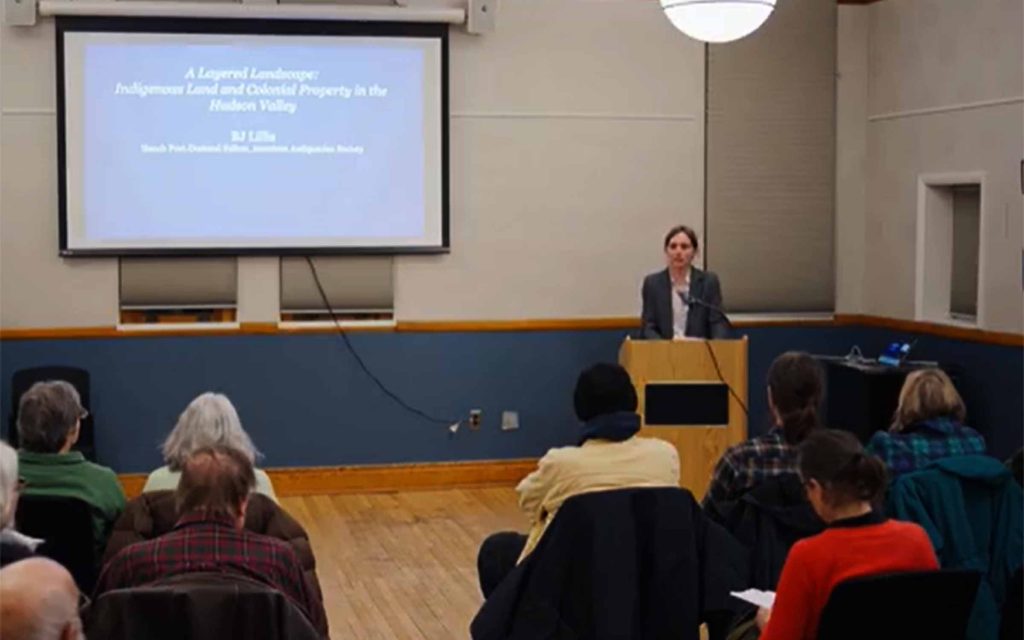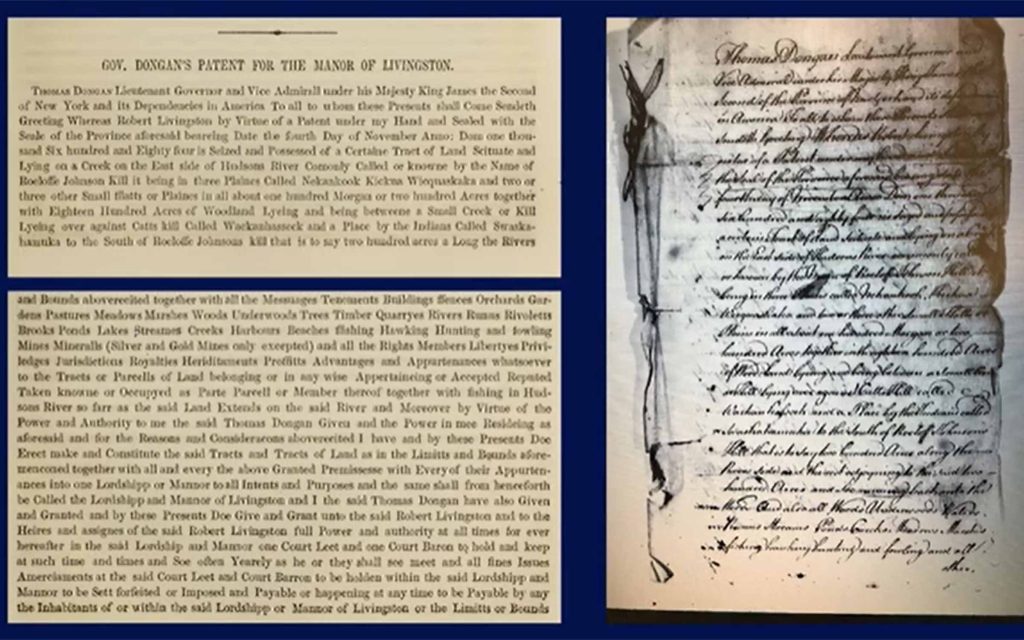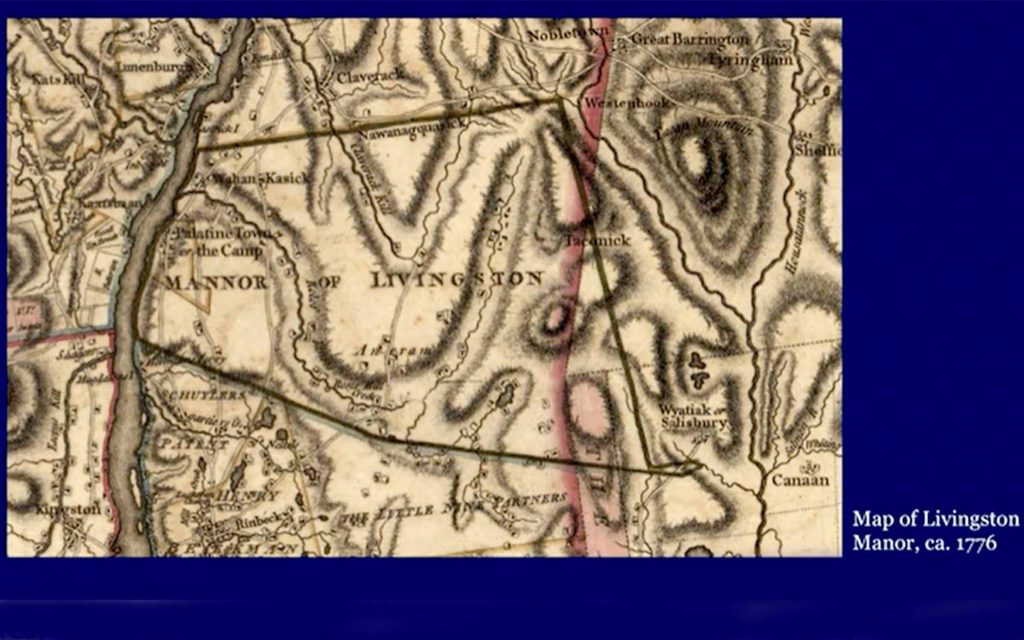
This presentation by BJ Lillis is about changing land rights in the colonial Hudson Valley including Indigenous and tenant resistance to a manorial system was hosted by the Jacob Leisler Institute for the Study of Early New York History, in collaboration with the Hudson Area Library. Lillis traces Indigenous survival and resistance to colonialism on Hudson Valley manors from the late 17th century to the 1760s, when an unlikely alliance between tenant farmers and Native people organized tenant uprisings, rent strikes, and coordinated legal action against Hudson Valley landlords. Click here for a 77-minute video of their presentation posted on March 13, 2025.



BJ Lillis is the Hench Post-Doctoral Fellow at the American Antiquarian Society in Worcester, MA. They completed their Ph.D in history at Princeton University in 2024. Their project, A Valley Between Worlds: Slavery, Dispossession, and the Creation of a Settler-Colonial Society in the Hudson Valley, 1674-1766, brings together histories of Atlantic slavery, Indigenous North America, and English, Dutch, and German colonialism to explore the contested relationship between land, labor, and property in the 18th-century Hudson Valley.



In the 1760s, some landlords intensified their approach to market-oriented agriculture, replacing customary lease terms with shorter leases and money rents. Judge Robert Livingston negotiated land purchases from the Mohican Natives.



Tenants turned to extra-legal action even as their Wappinger and Mohican allies pursued their land rights within the imperial legal system. Together, their actions reveal the contingent, contested foundations of rural capitalism and property on the eve of the American Revolution.
